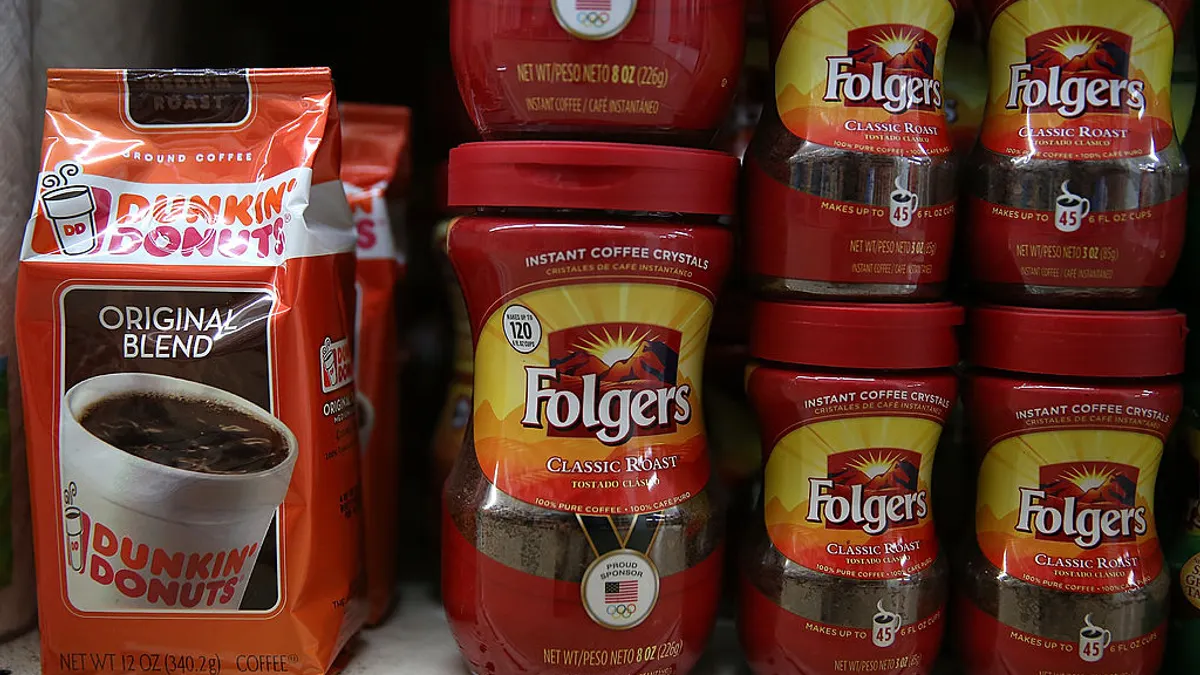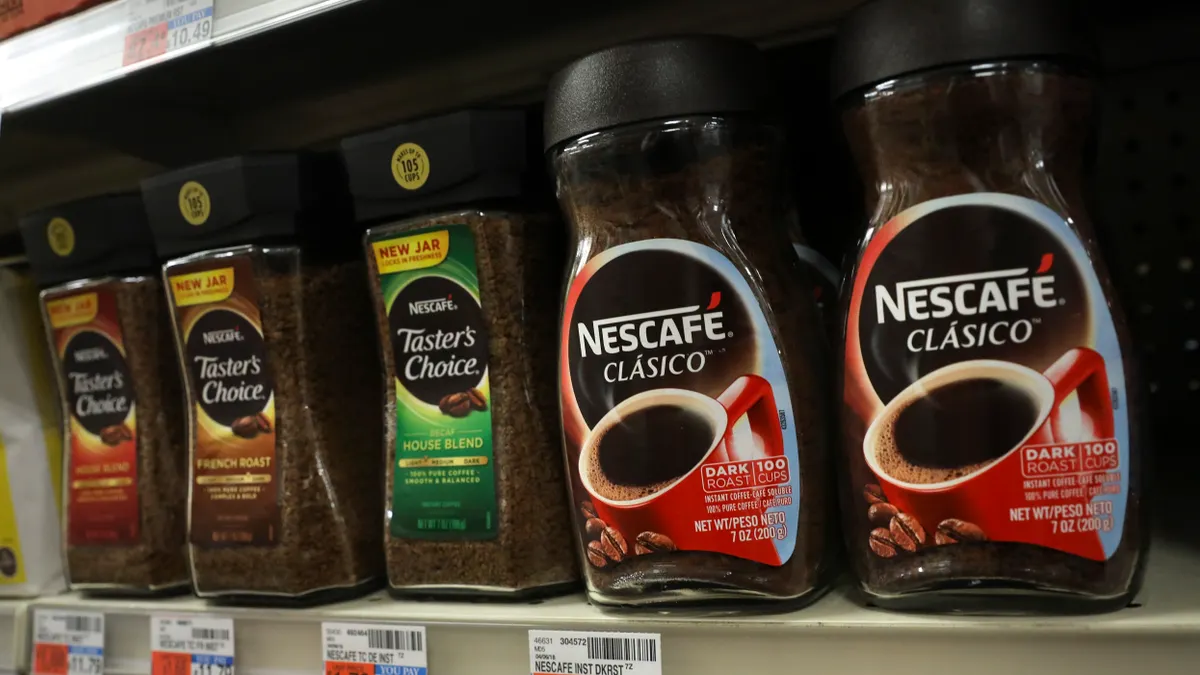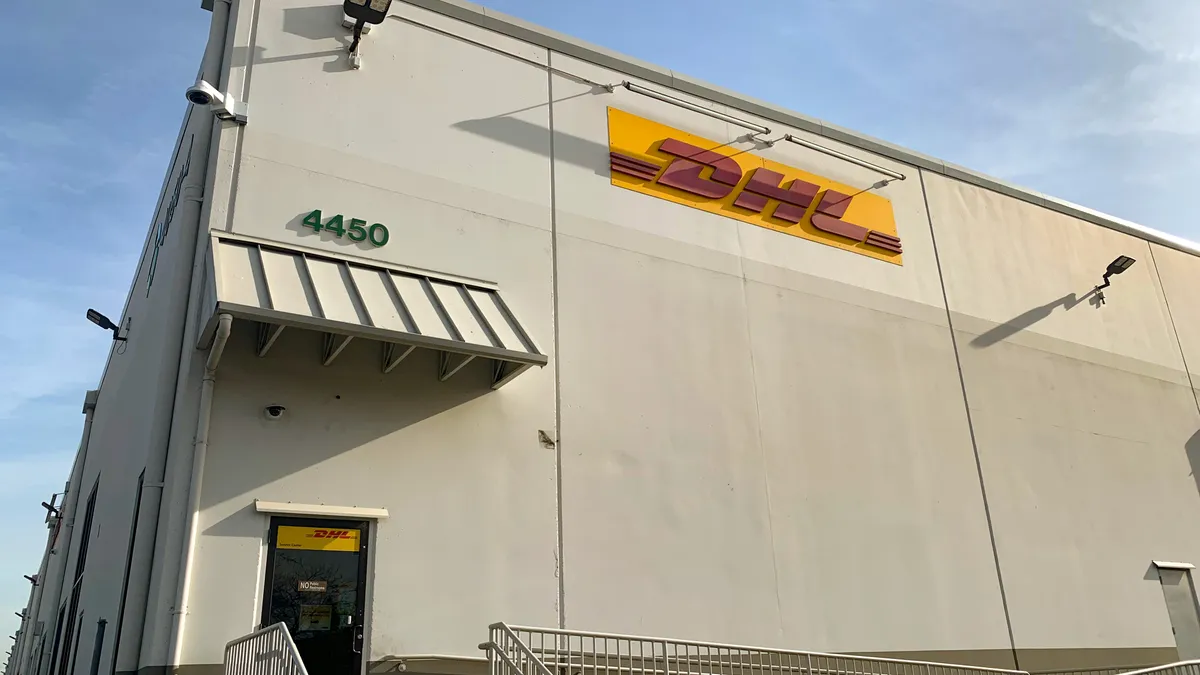Stockpiling chocolate and cookies isn’t uncommon before the holiday season, though in Cadbury’s case, it wasn’t just to ensure there would be enough for Christmas sales. Britain’s exit from the European Union is causing uncertainty for manufacturers like Cadbury who rely on open trade for ingredients and finished goods.
Brexit isn’t the only trade issue leading companies to build up inventory. President Trump’s introduction of tariffs on Chinese goods caused some manufacturers and retailers, including American Global Logistics’ clients, to start stockpiling goods.
The Chinese New Year typically brings a shipping slowdown, said Lori Fox, vice president of customs at American Global Logistics (AGL). But "it could be that the train keeps going pretty steadily ... to beat tariff increases if they happen," she told Supply Chain Dive.
The stockpile before the storm
Most of AGL’s clients sell tires, furniture or home décor and mainly import from countries where the U.S. placed tariffs, anti-dumping and countervailing duties. "There’s always an issue with certain commodities. We have a heads-up on those, when there are investigations going on," Fox said. And it’s easier to plan for those, compared to the recent tariff increases, which have been "pretty much immediate," she said.
Some of AGL’s clients’ products imported from China had no tariffs before the recent trade war began. Now they are trying to beat the potential increase in tariffs from 10% to 25%.
Fox’s clients importing from China were originally trying to get goods in ahead of the initial Jan. 1 tariff increase. Now that it’s been delayed to March 2, her clients have a new target date. Some are increasing their order size, and some are just trying to beat the deadline for their regular orders. "We’ll probably go through this again if the tariff increase actually happens in March," said Fox.
Balancing the balance sheet
Profit is on her clients’ minds, especially as furniture was previously duty-free, said Fox. Importers have had to pay 10% on their goods since Sept. 24, 2018. "They go from zero to possibly millions in extra expense that they didn’t account for in their financial plans. Profits are a huge issue," she said. "Some say they don’t know if they’ll make it through this trade war. It could put customers out of business."
Some customers of Blue Ridge’s supply chain planning software are also stockpiling goods — also known as making investment buys or forward buys, said Rod Daugherty, vice president of product strategy. Blue Ridge’s customers are typically retailers and wholesale distributors.
"Wholesalers and retailers usually borrow money to pay for inventory. Inventory is the most expensive thing they own," Daugherty told Supply Chain Dive. The goal is often to sell the inventory before they have to pay for it, which helps protect their profit margins.
This requires buyers to determine the right amount to purchase, especially if borrowing to pay for it. Bad purchasing decisions can lead to diminishing returns or a loss.
"Some say they don’t know if they’ll make it through this trade war. It could put customers out of business."

Lori Fox
Vice President of Customs, American Global Logistics
Companies should forecast how much extra to buy before a risk like tariffs comes up, leading to a price increase, then balancing that with what they can sell, Daugherty said. "If we’re still carrying a lot of inventory after 30 days, we won’t be making the full profit on that."
Making sure the additional items will sell is important too. "Everybody needs tires," she said. "Those commodities won’t have a problem selling. But in home décor and furniture, styles change all the time." If a company brings in more than normal, and the styles don’t sell, that lowers margins.
Stockpiling is also affecting shipping rates. The carriers have been using the situation to their advantage as much as possible, Fox said, decreasing capacity to charge higher rates. “It’s not an easy market right now,” she said. "It’s difficult to overcome the higher spot rates in order to bring in as much product as possible, before tariff increases go into play."
The downsides to stockpiling
If buying something with a shelf life, it could expire if not sold within the right time frame. "I doubt that people are buying very much from overseas with a short-lived shelf life," Daugherty said, as shipping overseas requires long lead times and sometimes enough goods to fill a shipping container. In the U.K., however, Brexit is leading some companies to import perishables like chocolate ingredients and cheese to maintain supply and profit.
"Wholesalers and retailers usually borrow money to pay for inventory. Inventory is the most expensive thing they own."

Rod Daugherty
Vice President of Product Strategy, Blue Ridge
With stockpiling, supply chain managers need to be realistic about their storage capacity. A company may need to pay for additional storage and labor to keep and move the items. "You can go to an outside facility and rent space or trailers," Daugherty said. If you need to move them around the yard for unloading, however, logistics costs increase.
It’s not just a matter of cost, though. Industrial real estate space is at its lowest level since 2000, with demand for warehouse space exceeding supply in 2018 by 29 million square feet.
Some of Fox’s clients are trying to optimize their space instead, using vertical space to be more efficient and avoid renting more. Some ways to optimize vertical space are of course, placing pallets higher. But it also includes building racks over docks and over the aisles, with enough clearance for forklifts.
This story was first published in our weekly newsletter, Supply Chain Dive: Operations. Sign up here.





















